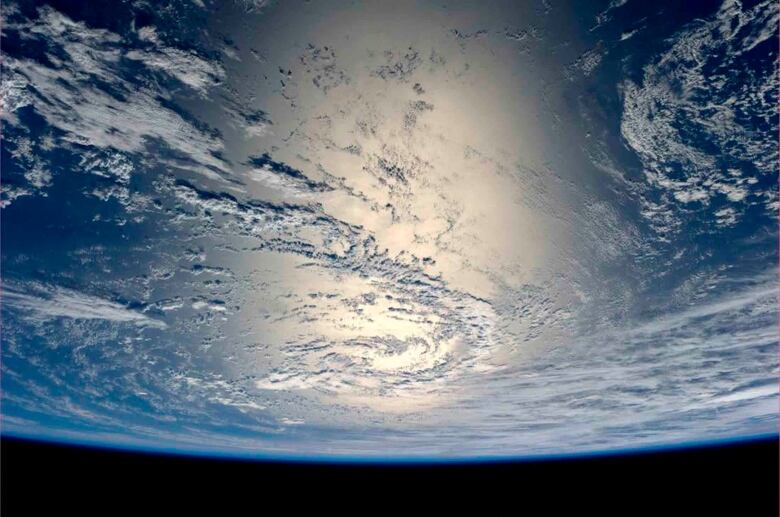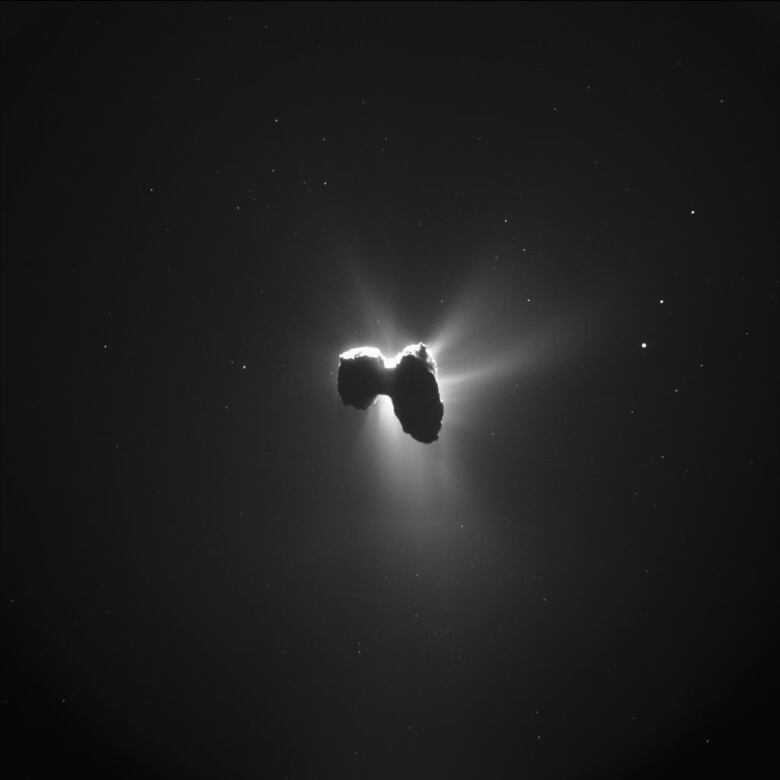Rosetta spacecraft helped us 'dig into our past' and understand where we came from
European Space Agency's historic mission is over, but work deciphering its comet findings has just begun

Europe's comet-chasing space probe Rosetta may be lost to us for good, but the discoveries it made during its 12-year mission studying a distant, icy comet will help us unravel mysteries of life and the universe for decades to come.
After more than a decade of pursuing, and then orbiting, comet 67P/Churyumov-Gerasimenko, Rosetta had moved too far from the sun for its solar power to operate much longer.
The European Space Agencybidit adieu on Friday with a controlled, slow-motion crash landing onto comet 67P,giving it one last chance to gather scientific data as it neared the comet's surface.
The #Rosetta probe dipped out of orbit in slow motion so it could take these unprecedented close-ups of the comet. https://t.co/PvD5LsJHeY pic.twitter.com/1K7Gg0ejP9
—@CBCTechSciDuring its mission, thespacecraftmade a number of historicfirsts andgathered a massive trove of information that's already helped us to better understand not only comets, but also the originsof life on Earth.
And we've just barely scratched the surface.
'Comets are time capsules'
Rosetta launched in 2004 on amission to get up close to comet 67P.
Whenit reached its destination a decade later, it entered into orbit around the comet and released its lander, Philae, onto the surface.
"Itis the first mission to orbit a comet and it's the first mission to land something on a comet," saidChrista Van Laerhoven of the University of Toronto'sInstitute for Theoretical Astrophysics.
But what's so great about studying some old, dusty space rock?

"Comets are time capsules.They have incorporated material from the very beginning of the solar system and they've held onto that until now," said AaronBoleyofthe University of British Columbia'sdepartment of physics and astronomy.
"It's an opportunity for us to dig into our past what events led to the formation of the solar system,how material came together to form the planets themselves."
Where did our oceans come from?
It's long been a mystery how Earthgot the ingredients it needed to form life things like water and organic compounds.
"When Earth formed it would have been quite warm. It would have, in fact, even had a magma ocean-like surface at some point, which iskind of cool, but it also means that things would have been very sterilized," Van Laerhoven said.
A running theory has been that comets brought the water. Unlike asteroids, they formed far away from the sun, so they're packed with ice.

While Rosetta found plenty of water on 67P, it wasn't the right kind. It contained deuterium hydrogen that has an extra neutron making it heavier. That kind of water is rarely found on Earth.
"It doesn'tmatch, so there'sno way to actually build Earth's oceans," Boley said. "And so it comes down to, well, what could happen to give us the oceans?It looks like it might have been from the asteroids themselves."
Building blocks of life
But water doesn't automatically equal life. For that, you need some organic molecules.
And scientists found plenty of complex organic molecules on comet 67P more than they ever expected provingthat comets are drifting through space carrying the basic building blocks of life, and they may have given Earth just what was needed exactly when it was needed to set the stage.
- Rosetta spacecraft discovers comet carries key ingredients for life
- Philae lander finds complex organic molecules like acetone on comet
"So there you get Earth, you get oceans somehow maybe from comets, maybe from elsewhere but then you're trying to start life, and you're like, 'Well, I've got rocks and I've got water, and not very much else," Van Laerhoven said.
"If youbombarded Earth with some number of comets fairly late in its formation, then youcould have,in principle, delivered some of the organic molecules that you could use as a starting point for life. So you don't have to start from exactly nothing. You can start with already having a few chains of carbons around for you to build from that."

Best is yet to come
But this is all just a drop in the bucket of what Rosetta's data has to offer.
"They haven't had a chance to really look at everything the spacecraft has sent so far, and analyzing it altogether will be important,and making connections between what Rosetta has told us about this comet and making connection to other comets and other flybys. It'sgoing to take us a very long time to dig through and get everything that we can out of this data,"VanLaerhovensaid.
"There is a very long tradition in the science community of pulling interesting information out of spacecraft data for decades and decades and decades after the spacecraft has already moved on."
With files from The Associated Press and Reuters












_(720p).jpg)


 OFFICIAL HD MUSIC VIDEO.jpg)
.jpg)



























































































